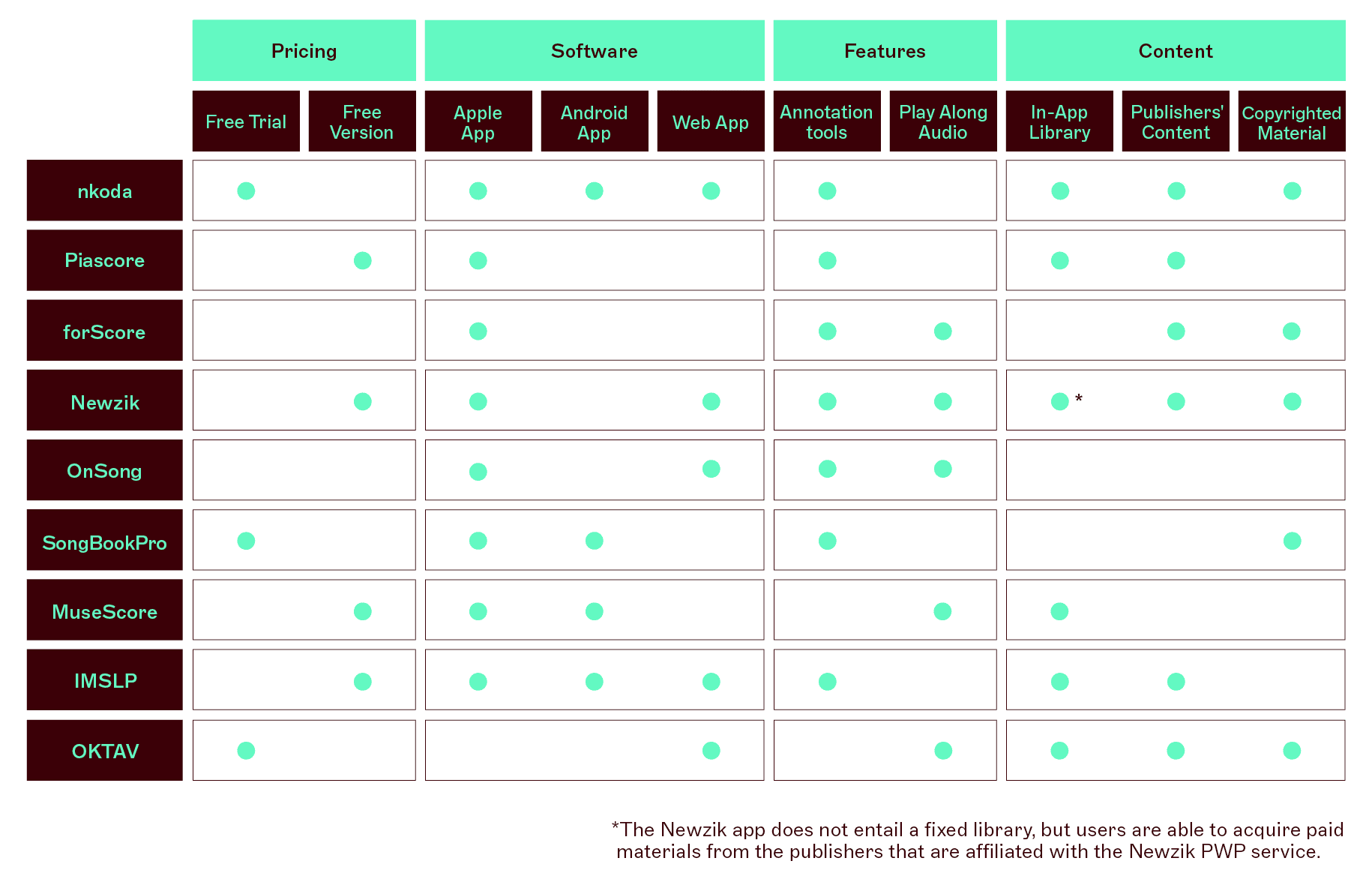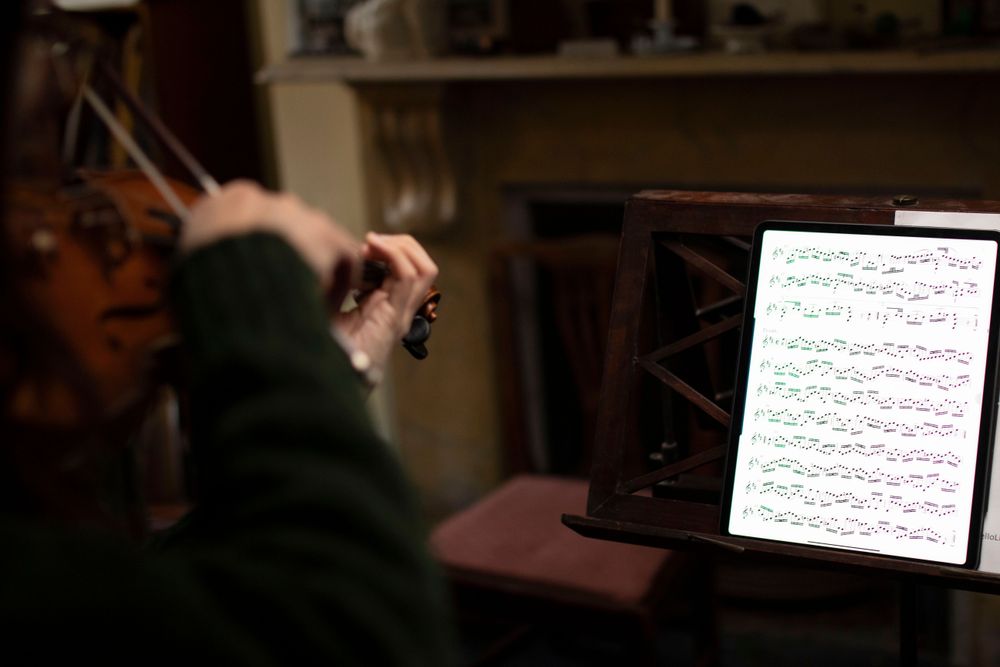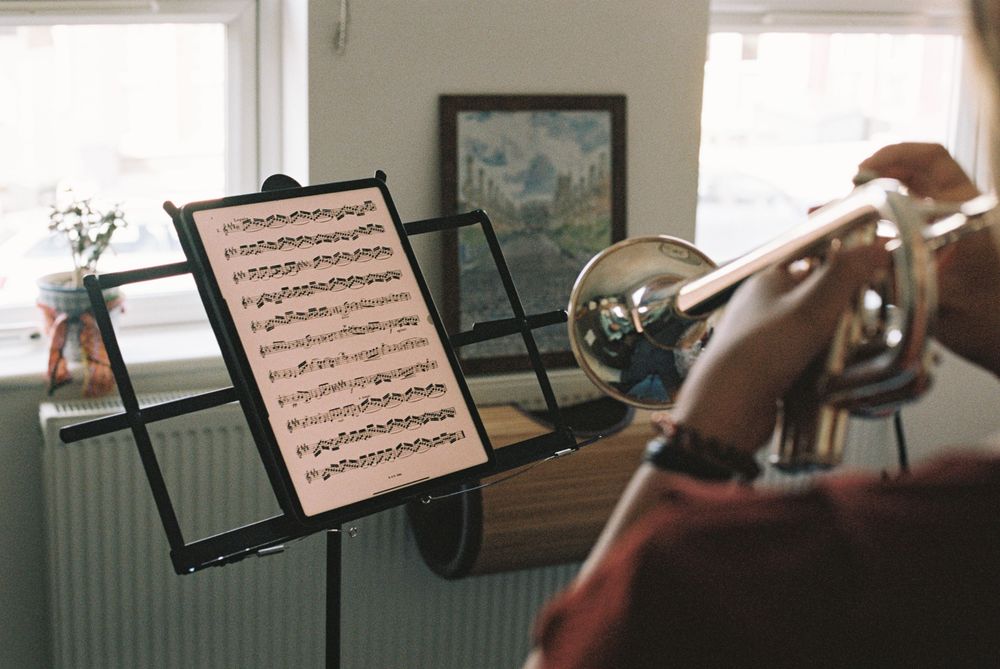How to choose the best sheet music app for you
You’ve completed step one by reading this article, but there are a lot of layers to this process. Think about what exactly it is that you’re after in a sheet-music app - which dimensions of your musicianship you’d most like to streamline.
As you can see in the table above, each app’s assets have been grouped into four major and overarching categories. Relating to the most pressing user needs - such as access to certain types of content and compatibility with devices - these are, broadly speaking, the most important things to consider. These are the make-or-break factors.
Pricing
Is it important to you that you get free access to your digital service, or are you willing to pay a fee for the right one? Is a free trial essential? Would you prefer a subscription fee over a larger one-time payment? Are there in-app purchases?
These are the kinds of questions that can steer you towards some options, or away from others. Admittedly, few apps will allow you to enjoy their full facilities for free, with many offering simplified free versions instead, but in some cases you can get pretty far without paying anything.
Software
Few of the apps above are universally available on the major operating systems and their corresponding app stores. If you are looking to access your sheet music via your Android tablet, for instance, then that immediately narrows the market.
Are you looking to practise at home? Then web access might well do. But if you’re looking to perform on-stage, then you’ll likely need a more portable device - and cross-platform access (allowing you to log in to the app from a range of devices) wouldn’t go amiss.
Features
This is a really broad one, and it’s an important one, potentially making all the difference. Collectively, the apps offer too many features to include in the table - scanning, plugins, Bluetooth-pedal attachment, and so on. But each one offers a unique and wide-ranging combination of tools to offer a particular in-app experience.
What exactly do you want to do with your sheet music, and which apps allow you to do that through their features? How do you want digital tools to enhance and aid your study, practice or performance? Each app’s website will supply the information that you’ll need to know about the tools their service provides before you commit one way or another.
Content
This article may be all about apps, but what are they if not a tool to bring us closer to our sheet music? That’s what it’s all about, and the type, quantity and diversity of the content that these apps offer is sure to be another dealbreaker.
Your instrument, your genre, your skill level - these are all factors that are going to make the content of some apps valuable and that of others inadequate. Do you need premium editions? Do you need copyrighted material? Ensure that whatever app you’re opting for can provide you with the materials you need for your personal music-making.









